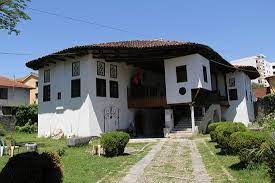Below are some basic facts, history, and some of our own perspectives about Shkodër Lake — we hope they are helpful in learning a bit more about one of our favorite places to visit!
Geography of Shkodra lake
Shkodra lake is the biggest lake in the Balkan peninsula, with a surface area that varies from 370–530 km2 . It has a shore length of 207 km and is situated 6m above the sea level, the deepest point reaches 44m. The Moraca & Ceni rivers deposit into Shkodra lake whereas the Buna river flows out of the lake emptying into the Adriatic Sea. Both temporary and permanent springs also deposit water into the lake.
biggest lake in the Balkan peninsula, with a surface area that varies from 370–530 km2 . It has a shore length of 207 km and is situated 6m above the sea level, the deepest point reaches 44m. The Moraca & Ceni rivers deposit into Shkodra lake whereas the Buna river flows out of the lake emptying into the Adriatic Sea. Both temporary and permanent springs also deposit water into the lake.
Short History
Shkoder lake takes its name from Shkoder, the biggest city along its shores. In the ancient times the lake was referred to as Palus Labeatis (from the Romans). The Labeats were an Illyrian tribe that inhabited the region around the lake pre-Roman invasion. Today the lake is divided between Albania & Montenegro and this was decided at the 1913 Conference of London, ⅓ of the lake belongs to Albania and ⅔ to Montenegro.
Shkoder Lake has always played an important role in the life of the locals and for  thousands of years since the Illyrians inhabited this region the lake was perceived almost as a sea, because ships could enter from the Adriatic via the Buna river. Because of this unique geographic opportunity, the locals had access to various trade routes and this helped bring wealth and culture to the region.
thousands of years since the Illyrians inhabited this region the lake was perceived almost as a sea, because ships could enter from the Adriatic via the Buna river. Because of this unique geographic opportunity, the locals had access to various trade routes and this helped bring wealth and culture to the region.
You can see here a picture of the Old Bazar of Shkoder that was right along the Buna River. Unfortunately it was destroyed in 1946 by the communist dictator, Enver Hoxha.
We also want to highlight the story of Oso Kuka, an Albanian patriot who died in 1862 on  the island of Vranijina where he blew up a tower killing himself and Montenegrin soldiers. In the following decades, Osa Kuka became a motivating figure of the Albanian independence movement and an honored character of important works in Albanian literature. Additionally, the Ethnographic Museum of Shkoder is located inside his family home.
the island of Vranijina where he blew up a tower killing himself and Montenegrin soldiers. In the following decades, Osa Kuka became a motivating figure of the Albanian independence movement and an honored character of important works in Albanian literature. Additionally, the Ethnographic Museum of Shkoder is located inside his family home.
Shiroka & Zogaj
Shiroka & Zogaj are two villages on the Albanian side of the lake. The inhabitants of these villages formerly made their living with the fish provided by the lake and the little fruticulture that the mountain offers. In Shiroka you also can find a XX cen. Villa of the  late King Zog of Albania built in Venetian style. Shiroka is a well known destination for locals and visitors to try “Tave Krapi” a traditional Shkodran dish made from carp marinated in a red bittersweet sauce.
late King Zog of Albania built in Venetian style. Shiroka is a well known destination for locals and visitors to try “Tave Krapi” a traditional Shkodran dish made from carp marinated in a red bittersweet sauce.
Shkodrans frequently bike from Shkoder to Zogaj for a swim, to exercise, or just for fun. Thanks to the picturesque view, a bike ride from Shkoder to Zogaj is one of the top things to do in town.
Fauna
Shkoder lake is one of the largest bird reserves in Europe, with 270 different bird species, including (but not limited to) pelicans, herons, and seagulls. The lake seems to s well with birds during the winter season as some stop here on their winter migration south. Below the water the lake is literally swimming with roughly 34 various species of fish, primarily, carp, bleak, and eel.
well with birds during the winter season as some stop here on their winter migration south. Below the water the lake is literally swimming with roughly 34 various species of fish, primarily, carp, bleak, and eel.
Our point of view
Shkoder Lake is beautiful and provides locals as well as tourists an opportunity to enjoy the tranquility that mother nature provides, whether on foot, by bike, or on the water. Unfortunately though there is no  convenient border crossing along the shores of the lake, preventing Albanians, Montenegrins, as well as tourists from enjoying the lake in its entirety.
convenient border crossing along the shores of the lake, preventing Albanians, Montenegrins, as well as tourists from enjoying the lake in its entirety.
We can only hope that in the future a border crossing will be reevaluated and cross border initiatives will be taken so that we can all share and enjoy the beauty of the lake together.
*Please note that we’ve only focused on the Albanian side of the lake, but both sides are beautiful! Worth highlighting is one of Montenegro’s national parks that encompasses several islands and a few Monasteries from the 14th and 15th century.
If you love to explore Shkodra lake and maybe stop in one of the restaurants for a “tave krapi” lunch. Check our Shkodra lake by bike activity.



